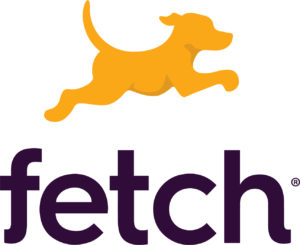What the heck happened to SVB?!? — Ian Kay // Fifth Third Bank
- Part 1 What the heck happened to SVB?!? — Ian Kay // Fifth Third Bank
- Part 2What SVB’s collapse means to Tech marketers — Ian Kay // Fifth Third Bank
Show Notes
-
02:49Silicon Valley Banks (SVB) business model and backgroundSVB focused on providing funding and debt facilities to startups in the tech sector. They experienced significant growth over the past decade, largely due to these large deposits from startups, and invested these deposits in treasury and mortgage-backed securities in 2019.
-
05:58SVB's investment losses and efforts to absorb themSVB invested a significant portion of its deposits in treasuries and mortgage-backed securities in 2019. As interest rates skyrocketed, these assets became devalued, and SVB sold the assets at a loss and tried to sell equity from the company to rectify the issue.
-
08:08What led to SVBs downfallSVB's realized loss of $2 billion from selling their devalued assets flipped their assets and liabilities, making them technically insolvent and killing their equity value. As a result, the VCs panicked and pulled out their deposits, ultimately leading to the downfall of the bank.
-
10:09What SVB could have done to avoid its downfallThe combination of SVB buying bonds in 2019 and not responding to rising interest rates in a timely manner, along with panic among VCs, caused the downfall of the bank. If SVB had acted earlier instead of all at once, they could have avoided the situation and still been in business.
-
11:21FDIC guarantee and government assistance for SVB deposit protectionSVB did not receive a bailout from the government but rather received assistance through lines of credit and support from the FDIC. The FDIC's main goal was to back depositors, which they successfully did, but shareholders and bondholders of the bank will still face losses.
-
12:40Why the government assistance received by SVB is not a bailoutSVB is not getting a bailout from the government, but instead is breaking apart and selling the bank's assets to recoup some of the losses. The funds to back depositors and pay back loans arent coming from taxes but from the Fed's line of credit for these situations.
-
14:40The difference between SVBs situation and the 2008 financial crisisThe current situation with Silicon Valley Bank (SVB) is different from the 2008 financial crisis as it is not a credit problem with customers defaulting on loans. Instead, its a self-inflicted liquidity issue due to poor risk management of deposits.
-
15:14Who is at fault for the SVBs mismanagement of depositsEvery bank has a CRO or Treasurer whose job it is to take deposits and invest them to make net interest margin. In this case, the C-Suite failed to properly manage the investments of the bank's deposits, leading to a liquidity crunch.
Quotes
-
"SVB has a different business model than a lot of the many banks globally. They focus on the tech sector and bank 50% of the startups in the entire country." -Ian Kay, Executive Director, Fifth Third Bank
-
"SVB was once a $19 billion bank 10 years ago. It grew into a $212 billion bank and became the 16th largest bank in the country." -Ian Kay, Executive Director, Fifth Third Bank
-
"If SVB had time to raise money, I believe they would have gotten out of this. But everything happened so quickly, and the VCs freaked out and pulled their money, thats what killed the bank." -Ian Kay, Executive Director, Fifth Third Bank
-
"What happened in 08' was a credit problem. People were defaulting on loans galore. In SVBs situation, theres no credit problem, no large customers defaulting and then taking a write-off." -Ian Kay, Executive Director, Fifth Third Bank
- Part 1 What the heck happened to SVB?!? — Ian Kay // Fifth Third Bank
- Part 2What SVB’s collapse means to Tech marketers — Ian Kay // Fifth Third Bank
Up Next:
-
Part 1What the heck happened to SVB?!? — Ian Kay // Fifth Third Bank
Ian Kay, Executive Director at Fifth Third Bank, talks about the recent turbulence in the banking industry and what it means for the martech industry. Silicon Valley Bank (SVB), a tech-focused bank, was taken down by a classic banking problem, a run on the bank. However, many argue that SVB would have never been in that situation if its management had been more proactive in managing risk and avoiding investments in bonds that were susceptible to interest rate increases. Today, Ian discusses what happened to Silicon Valley Bank (SVB).
-
Part 2What SVB’s collapse means to Tech marketers — Ian Kay // Fifth Third Bank
Ian Kay, Executive Director at Fifth Third Bank, talks about the recent turbulence in the banking industry and what it means for the martech industry. SVB was the 16th largest bank in the US, and the largest tech bank. Its collapse will significantly impact the innovation economy and the startup community, but it also highlights the need for companies to have a clear strategy and be efficient with their capital. Today, Ian discusses what SVB’s collapse means to the martech industry.
Play Podcast










